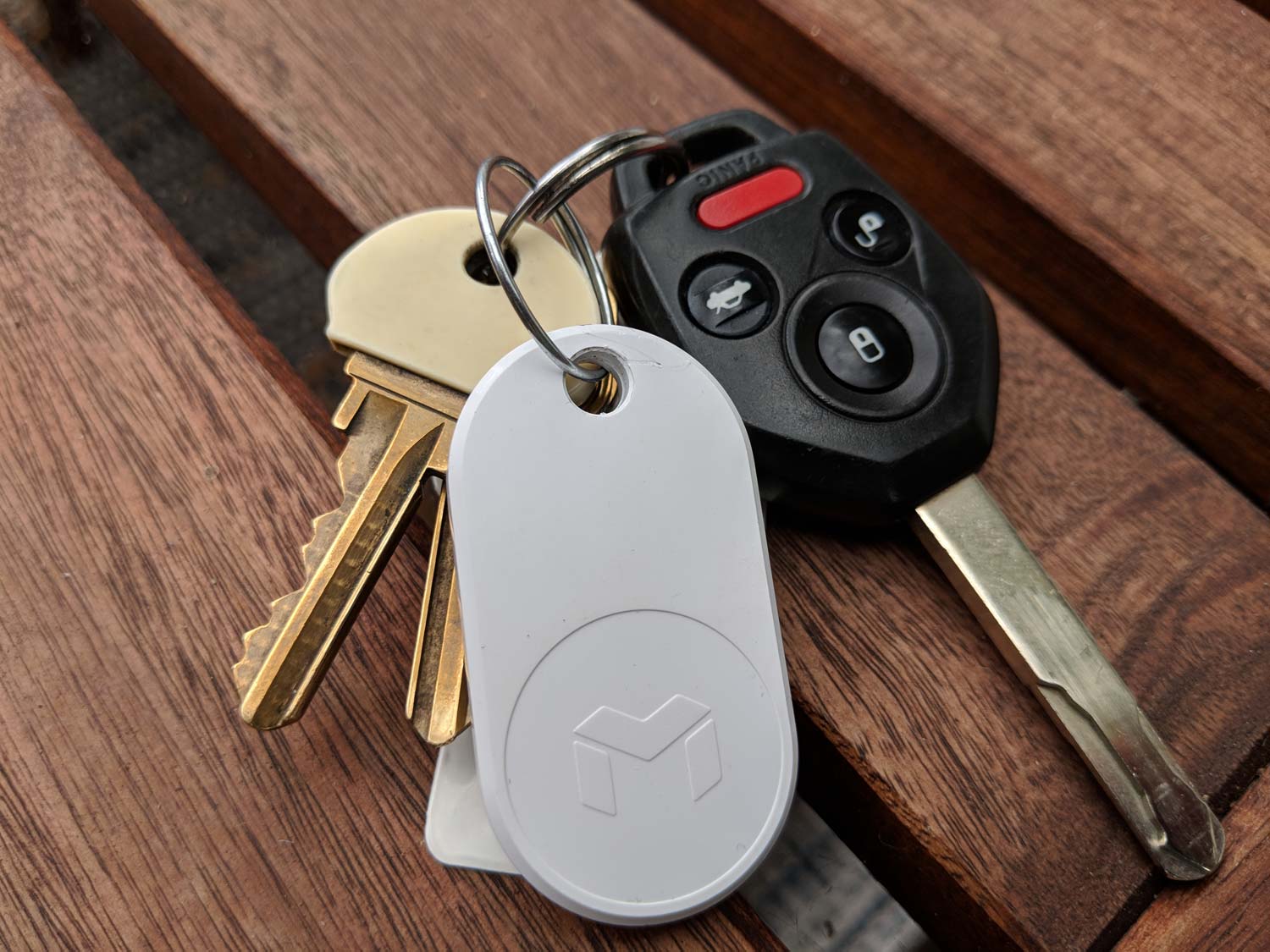Tom's Guide Verdict
The Mynt ES is an affordable key tracker, though it lacks the polish and features of slightly more expensive rivals.
Pros
- +
Cheap
- +
Good digital leash feature
- +
Decent range
- +
Solid battery life
Cons
- -
Replacing battery is a pain
- -
Poor documentation
- -
Faint alarm
- -
Bizarre cryptocurrency feature
Why you can trust Tom's Guide
The biggest argument for the Mynt ES key tracker is its price. At $15, it's one of the most affordable key finders out there and $10 cheaper than the least expensive option from Tile. But those savings come at the expense of design and features.
The Mynt ES handles the basics of finding your keys well enough, but its app lacks the polish you'd get from the Tile Mate. And instead of an eye-catching design to attach to your keychain, you get a fairly indistinct slab of plastic.
Mynt ES Specs
| Size | 2 x 1.2 x 0.1 inches |
| Weight | 0.32 ounces |
| Listed Range | Up to 150 feet |
| Tested Range | 50-60 feet |
| Loudness Claimed | 80 dB |
| Battery/Promised Battery Life | Replaceable CR2032/one year |
| Compatibility | Android, iOS |
| Colors | Black, White |
Mynt ES Design
The oval-shaped Mynt measures 2 x 1.2 x 0.1 inches. It's thinner than most key trackers — the Tile Mate is 0.24 inches thin, for example — but it sticks out in a way that round and square key finders do not. You have a choice between white and black version of the Mynt ES, and the device comes with a textured area doubling as a button for when you want to locate your phone.
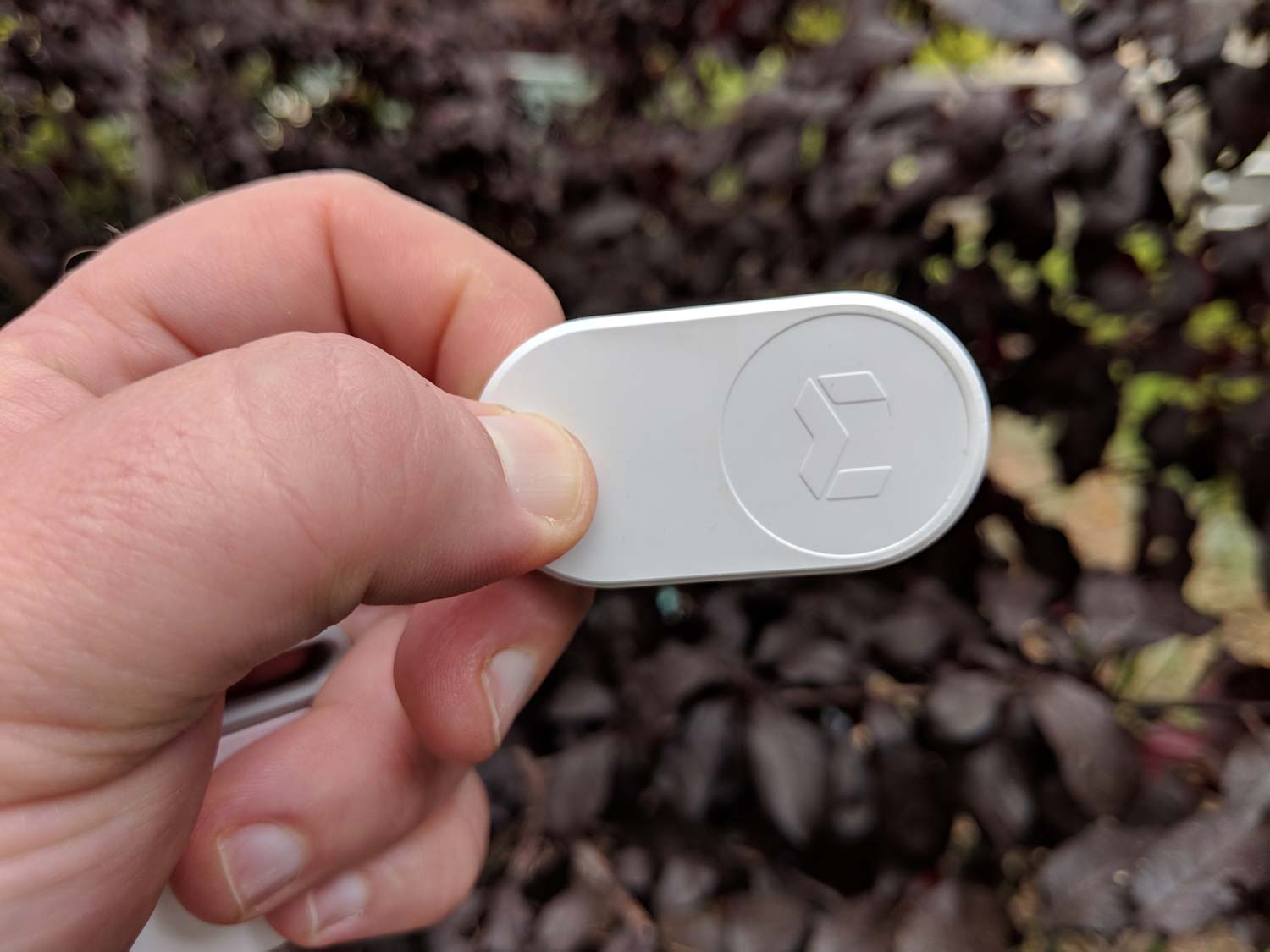
That's one of the two main features of the Mynt ES, which pairs with your phone over Bluetooth. Tap a button in the Mynt app running on your Android or iOS device, and the key finder will play a 5-second alarm on continuous loop until you tap the app button again, signifying that you've found your keys. Press and hold the button on the key finder itself, and your phone will sound an alarm, though it will stop the minute you let go of the button.
App
The app includes a digital leash feature that sends a notification if your phone and Mynt key finder lose contact for a specified period of time. This feature aims to keep you from leaving your keys behind. You can adjust the time to 15, 30 or 45 seconds. A safe-zone feature is designed to prevent your phone from bothering you with false alarms when you and your keys are in the same vicinity. I found, though, that this finicky feature needed a little tweaking to work properly.
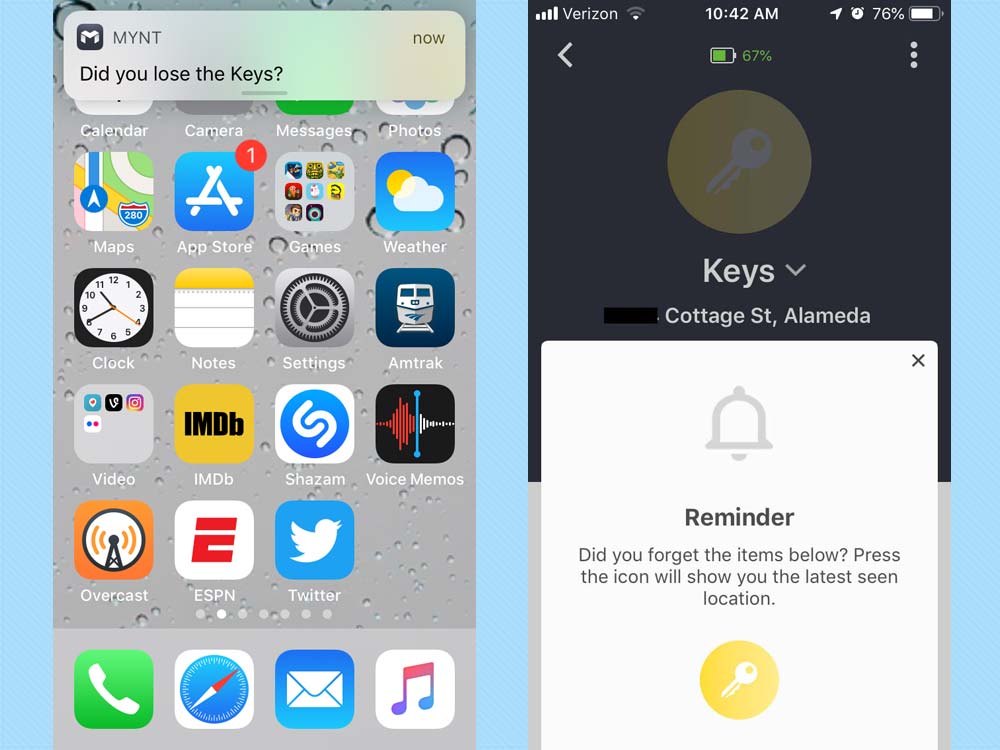
Like the apps that accompany most key finders, Mynt's version include tabs that show a list of the objects you're tracking as well as a map with the last known location of your items. There's a third tab, mysteriously labeled Wallet, and it appears to activate some sort of cryptocurrency feature. Mynt's website makes no mention of this feature, and when I contacted the company to ask what purpose the Wallet tab served in an app designed to track keys, they told me I could just skip that feature. That's not as reassuring answer as they probably thought.
Battery Life and Replacements
A CR2032 battery powers the Mynt ES, and the company says that this battery should last about a year. (That's a pretty honest estimate: I've had the Mynt a while now, and over the course of six months, its battery has declined from 88 percent to 67 percent, according to the readout in the app.) You can replace the battery, though that's not an easy task and there are no instructions on how to do it. Basically, you pull the device apart with your bare hands and hope like hell you haven't damaged your $15 key tracker beyond repair. I've popped open the Mynt ES once and reassembled it without a problem, but I wouldn't give myself good odds on pulling off this feat again.
How Mynt ES Performs
The alarm on the Mynt ES isn't very audible. It plays at 80 decibels, Mynt's maker says. I struggled to hear the key finder beeping from underneath a pile of laundry while I stood 4 feet away, which isn't good.
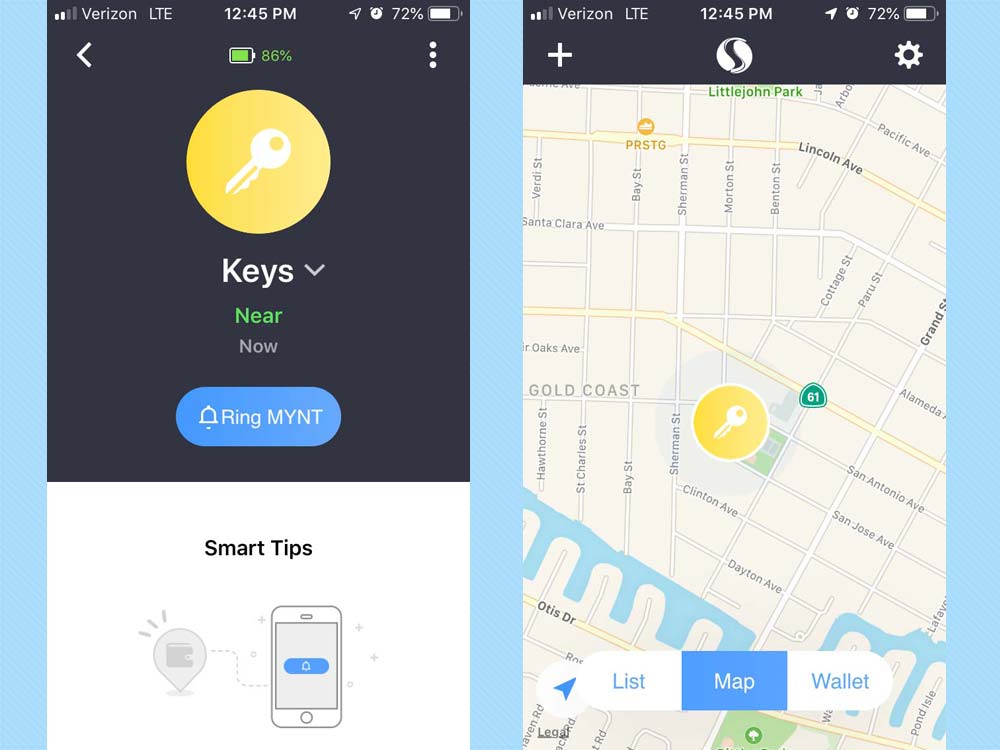
The faintness of the alarm becomes even more apparent when you venture outside. In a busy public park, I left the Mynt ES behind on a park bench and could barely make out the sound once I went 40 feet away. Other key finders — most notably, the Chipolo Plus — are easier to hear over the din of everyday life.
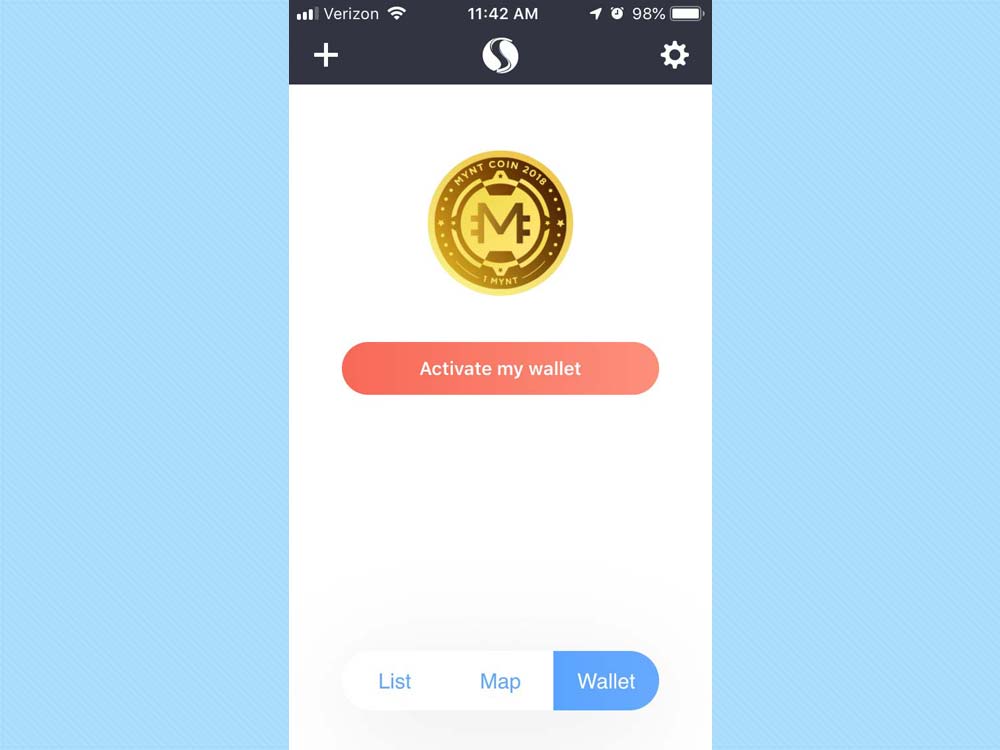
At least the Mynt ES offers decent range, though nothing like what you'd get from the best-in-class Tile Pro. I usually lost contact between my phone and the Mynt ES when I stood from 50 to 60 feet away. Usually, I regained the signal once I got within 40 feet of my keys, though sometimes I needed to get as close as 20 feet before my phone and the key finder reconnected.
MORE: Best Key Finders
Mynt's digital leash feature works fairly well, though be prepared for some delayed notifications if you use the 30- or 45-second settings. My phone consistently reminded me I had left the Mynt behind when I was 120 feet or so away, though the manner in which it notified me varied from case to case. When I was using my phone, a notification would flash up on the screen and a sound would play; if the phone wasn't in use, I'd hear the sound only, with no text notification telling me what was happening.
Bottom Line
When most other key trackers charge you $25, getting one for $15 can certainly seem appealing, especially when, as with the Mynt ES, the device handles basic tracking functions well. But you'll appreciate the extra $10 anytime you easily swap out the battery on the Tile Mate or don't have to fumble your way through the muddled interface of the Mynt ES app. Get the Mynt ES if what you care most about is spending the least amount of money, but look elsewhere if you want a key tracker that's more of a pleasure to use.
Credits: Tom's Guide
Philip Michaels is a Managing Editor at Tom's Guide. He's been covering personal technology since 1999 and was in the building when Steve Jobs showed off the iPhone for the first time. He's been evaluating smartphones since that first iPhone debuted in 2007, and he's been following phone carriers and smartphone plans since 2015. He has strong opinions about Apple, the Oakland Athletics, old movies and proper butchery techniques. Follow him at @PhilipMichaels.
